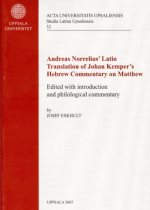25 July 1696 Messianic Kabbalist Moses ben Aaron ha-Kohen of Cracow becomes Johannes Christianus Jacobi Kemper #otdimjh
One of the most fascinating Jewish “converts” to Christianity in the Early Modern Period was Moses ben Aaron ha-Kohen of Cracow (1670–1716), who received the name Johannes Christianus Jacobi when he was baptized by Johannes Friedrich Heunisch on July 25, 1696 in Schweinfurt, Germany. The manuscripts of his Hebrew works, written in the early part of the eighteenth century during his tenure as Hebrew tutor at Uppsala University in Sweden, indicate, moreover, that he adopted the new surname Kemper. The story of Kemper’s spiritual odyssey and the intricacies of his attempt to prove the truth of his new faith on the basis of kabbalistic, and especially zoharic, sources have been studied by a number of scholars.
Johan Christian Jacob Kemper (1670–1716), formerly Moshe ben Aharon of Kraków, was a PolishSabbatean Jew who converted from Judaism to Lutheran Christianity. His conversion was motivated by his studies in Kabbalah and his disappointment following the failure of a prophecy spread by the Polish Sabbatean prophet Tzadok of Gordno, which predicted that Sabbatai Zevi would return in the year 1695/6. It is unclear whether he continued to observe Jewish practices after his conversion. [Wikipedia entry]
In March 1701 he was employed as a teacher of Rabbinic Hebrew at Uppsala University in Sweden,until his death in 1716. Some scholars believe that he was Emanuel Swedenborg’s Hebrew tutor.
During his time at Uppsala, he wrote his three-volume work on the Zohar entitled Matteh Moshe (The Staff of Moses), (1711). In it, he attempted to show that the Zohar contained the Christian doctrine of the Trinity.
This belief also drove him to make a literal Hebrew translation of the Gospel of Matthew from Syriac (1703). He also wrote Me’irat ‘Enayim (The Enlightenment of the Eyes), (1704) a Christian Cabala commentary on Matthew, which emphasized the unity of the Old and New Testaments and used elements from the Sabbatean and non-Sabbatean Kabbalistic traditions to derive Christian beliefs and meanings from traditional Jewish beliefs and practices.
In his commentary on polemical treatment of Christianity in rabbinical literature he was one of the first Lutherans to comment on the connection between the form of the name “Joshua” used for Jesus in the Talmud, Yeshu instead of the normal Yeshua used for other figures, and connected the dropping of the final ayin with the ancient curse yimakh shemo[‘may his name be blotted out’].
After his death, Kemper’s student Andreas Norrelius (1679–1749) translated the commentary into Latin as Illuminatio oculorum (The Light of the Eyes),(1749).
Reflection and Prayer: While few today are aware of Kemper’s work, his magnificent attempt to use kabbalistic exegesis to demonstrate the truth of Yeshua as Messiah is an important example of a trend that is still popular today. Not many would accept his presuppositions or hermeneutical methods, but he captures in his own life and faith one particular expression of what it means to be Jewish and believe in Yeshua.
Thank you Lord for this man of faith, who by his background, imagination and interpretation of the Scriptures straddles the two antithetical traditions and demonstrates, in his own time and context, rich competence in both. Help us similarly to study your Word and community it effectively, we pray. In Yeshua’s name, Amen.
Elliot R. Wolfson, “Messianism in the Christian Kabbalah of Johann Kemper,” in Millenarianism and Messianism in the Early Modern European Culture: Jewish Messianism in the Early Modern World, ed. Matt D. Goldish and Richard H. Popkin (Dordrecht and London: Kluwer Academic Publishers, 2001), 139–187.
download here:
http://en.wikipedia.org/wiki/Johan_Kemper
- Eskhult, Josef (ed.),Andreas Norrelius’ Latin translation of Johan Kemper’s Hebrew commentary on Matthew: edited with introduction and philological commentary by Josef Eskhult Uppsala,2007.ISBN 978-91-554-7050-0
- Goldish, M. Kottman, K.A. Popkin, R.H. Force, J.E. Laursen, J.C. (eds.),Millenarianism and Messianism in Early Modern European Culture: From Savonarola to the Abbé Grégoire. Springer, 2001. ISBN 0-7923-6850-9
- Maciejko, P. “Mosheh Ben Aharon Ha-Kohen of Krakow,” in Hundert, G.D. (ed.),The YIVO Encyclopedia of Jews in Eastern Europe,. Yale, 2008. ISBN 0-300-11903-8
- Shifra, A. “Another Glance at Sabbatianism, Conversion, and Hebraism in Seventeenth Century Europe: Scrutinizing the Character of Johan Kempper (sic) of Uppsala, or Moshe Son of Aharon of Krakow,” in Elior, R. (ed.),The Sabbatian Movement and Its Aftermath: Messianism, Sabbatianism and Frankism,(Hebrew), Hebrew University. Jerusalem.
- Wolfson, E. “Messianism in the Christian Kabbalah of Johann Kemper,” inMillenarianism and Messianism in the Early Modern European Culture: Jewish Messianism in the Early Modern World, 139-187. Edited by M. D. Goldish and R. H. Popkin. The Netherlands: Kluwer Academic Publishers, 2001
- Wolfson, E. “Angelic Embodiment and the Feminine Representation of Jesus: Reconstructing Carnality in the Christian Kabbalah of Johann Kemper,” inThe “Jewish Body” in the Early Modern Period, 395-426′. Edited by M. Diemling and G. Veltri. Leiden: Brill, 2008
Hans Joachim Schoeps, “Rabbi Johan Kemper in Uppsala,” Särtryck ur Kyrkohistorisk Arsskrift (1945): 146–177;
idem, Barocke Juden, Christen, Judenchristen (Bern and Munich: Francke, 1965), 60–67, translated into English by G.F. Dole, “Philosemitism in the Seventeenth Century,” Studia Swedenborgiana 7 (1990): 10–17;
idem, Philosemitismus im Barock: religions- und geistesgeschichtliche Untersuchungen (Tübingen: J.C.B. Mohr, 1952), 92–133;
idem, “Philosemitism in the Baroque Period,” Jewish Quarterly Review n.s. 47 (1956–1957): 139–144, esp. 143;
Shifra Asulin, “Another Glance at Sabbatianism, Conversion, and Hebraism in Seventeenth-Century Europe: Scrutinizing the Character of Johan Kemper of Uppsala, or Moshe Son of Aharon of Krakow,” Jerusalem Studies in Jewish Thought 17 (2001): 423–470 (Hebrew).
On the probable relationship of Kemper and Swedenborg, see Marsha K. Schuchard, “Emanuel Swedenborg: Deciphering the Codes of a Celestial and Terrestrial Intelligencer,” in Rending the Veil: Concealment and Secrecy in the History of Religions, ed. Elliot R. Wolfson (New York and London: Seven Bridges Press, 1999), 181–182; idem, Why Mrs Blake Cried: William Blake and the Sexual Basis of Spiritual Vision (London: Century, 2006), 64–65.




Reblogged this on Talmidimblogging.
LikeLike
Pingback: 25 July 1696 Mystic Moshe becomes Christian Kabbalist #otdimjh - Mapping Messianic Jewish Theology